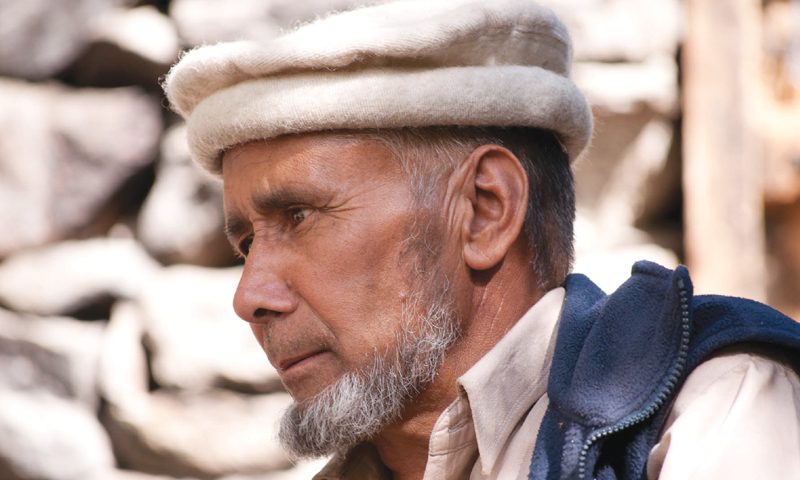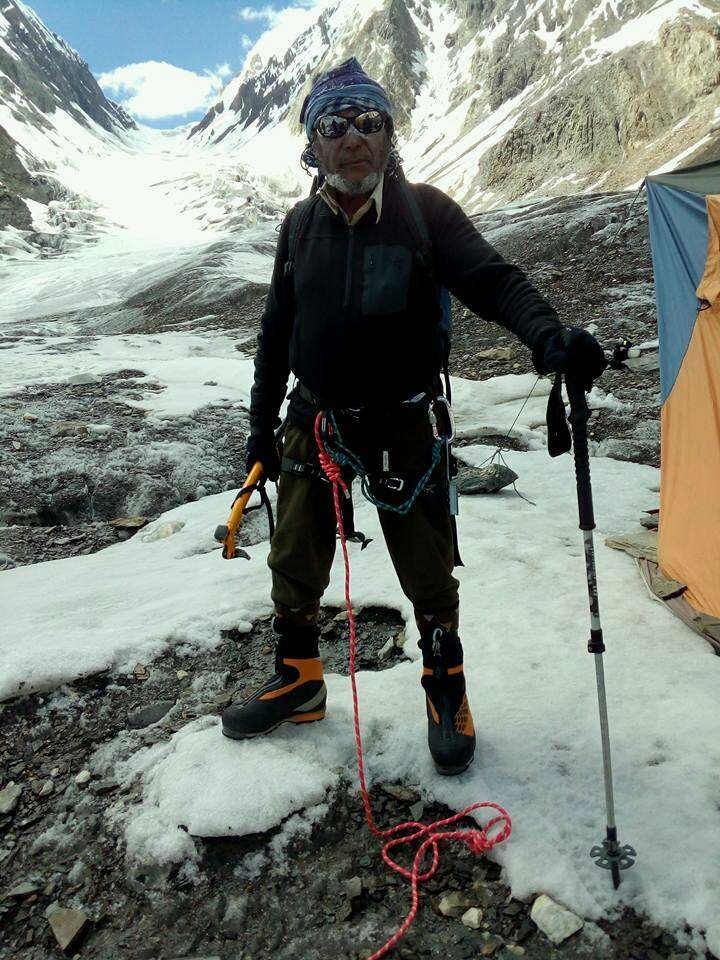What Makes a Climbing Hero and the Legendary Little Karim
Alpine climbing guide Ian Welsted talks about high-altitude porter Mohammad Karim, popularly known as Little Karim

Meeting Little Karim of Hushe was magical, like being a tourist in Iceland and actually seeing a fairy. In previous trips to the Karakoram, I had brief glimpses of the abilities of the locals. Humble and diminutive at just over five feet tall, Karim’s tales of unrecognized high altitude exploits put me in my place. My climb of K6 West that summer received considerable attention. In contrast, Karim’s many achievements are barely known. Karim’s warm, welcoming aura drew me to him; I wanted to find out more. I came away with an appreciation of what makes a true climbing hero for me.
Karim was guiding a Spanish trekking group. I sat down for tea. Karim had a humorous story for almost every year spent in his local mountains. In 1978, 1,800 Balti men were at the polo field in central Skardu to apply for portering jobs with Chris Bonnington and Doug Scott’s K2 expedition. Little Karim was dismissed as too small, at which point he hoisted Bonnington, who was much larger than Karim, onto his shoulders and paraded him around the field. Karim got the job.
In 1981, Karim was a high-altitude porter for the Japanese K2 West Ridge expedition. He was above base camp for three weeks when he heard that the summit duo of Nazir Sabir and a Japanese were out of oxygen and gas at their high camp at 8,100 metres. They would not summit. Karim hiked up these supplies from 7,100 metres. The next day, Sabir said Allah had brought them supplies and they summited. Karim says, “Not Allah, Little Karim.” Sabir went on to become Pakistan’s most famous climber.
In 1985, Karim carried a hang-glider to the summit of the 8,035-metre peak, Gasherbrum 2. Jean-Marc Boivin had promised him an extra 50 dollars to carry the load so that he could become the first person to fly off an 8,000-metre peak. Karim was not paid. Laurent Chevallier, a French filmmaker accompanying Boivin made a film called, Little Karim. As a result, Karim visited France as the chairman of the jury for the Autrans Mountain Film Festival.
In 1987, Karim climbed to within 100 metres of K2’s summit on a Spanish expedition. The following year, he carried a mono-ski to the summit of Gasherbrum 2 for a Henri Albet, who was suffering from altitude sickness. Karim tried to convince him not to ski, but Albet mentioned he had to please his many sponsors. The mono-skier slid to his death. As Karim put it, “You like the money, you like to die?”
The stories went on and on, too many to list. It was surreal sitting with a 60-year-old Balti and hearing this record of ascents, which put him near the top of the list of world mountaineers. Such is the world of high-altitude climbing as seen by westerners. Too often, Asians do most of the work but receive no recognition and are deprived the chance to summit. In journals, Karim’s ascents are usually listed only as “accompanied by a high-altitude porter,” the euphemism for paid Asian climbers. I left our conversation feeling like the wool had been pulled from my eyes.
There is not a hint of bitterness on Karim’s part at his lack of fame or fortune through climbing. He only laughs when talking about being underpaid by foreigners. He was all smiles and congratulated Raphael Slawinski and me for our successful climb. He was happy to be accompanying visitors and showing them the beauty of the mountains in his backyard. Proudly standing in front of a poster of K2, he enthusiastically traced his many trips in incredible times up his favourite mountain.

I felt I had met climbing royalty. But, that is what makes climbing special. We get to climb and hang out with the heroes of our sport. I was reminded of this upon the death of Dean Potter. A friend of mine, Nick, had moved to Yosemite to climb full-time when Potter had just done the first solo one-day link-up of The Nose and Half Dome. Potter was the ruling king of North American climbing. Within a year, Nick roped-up with Potter on Potter’s first visit to Squamish. I met Nick around that time and it was this lesson that partly drew me to climbing. In other sports there are athletes and an audience. Climbing is different. In climbing we are all in it together. We share the same venues, the same friends, the same mountains. People who begin as our heroes sometimes become our climbing partners, and often become our friends and mentors.
What does Potter have to do with Little Karim? They both show that the magic of climbing is in the doing and not the perception. Potter became a well-known name. Little Karim is known only to a small clique of high-altitude climbers. But, they both reached high levels of climbing success by doing what they loved most in the mountains. Potter spent years in obscurity, climbing full time in Yosemite. Little Karim continues to live a simple life in a small pastoral mountain town.
I hope this aspect of climbing never changes. Superstar climbers are more prominent now than ever. Some climbs heralded as “ground-breaking” are nothing more than carefully staged advertising events featuring one of these superstar climbers. I wonder, am I part of the target market? Would those superstar climbers really be doing that if all the cameras were not there? Potter seemed to do what he wanted with the sponsorships following. Infamously, some of his sponsors dropped him for his more outlandish activities. It is up to the athletes to choose what they want to take part in. It’s up to me to filter the climbing from the advertising.
Advertising is designed to make the audience feel unfulfilled, offering them a more desirable outcome, and, to associate a product with that outcome. Then, offer the product as a substitute for the desired outcome. I try to ignore the climbing stories which are only designed to sell an overpriced nylon shell or “sports drink.” Climbing is meant to make us happy. Let’s seek out more genuine stories. Pay attention to the people around us and, who knows, you may realize that you’re climbing with the next Potter or sharing tea with another unheralded Karim.
This article was published in Gripped’s August/September 2015 issue. Ian Welsted is one of Canada’s leading alpinists.


